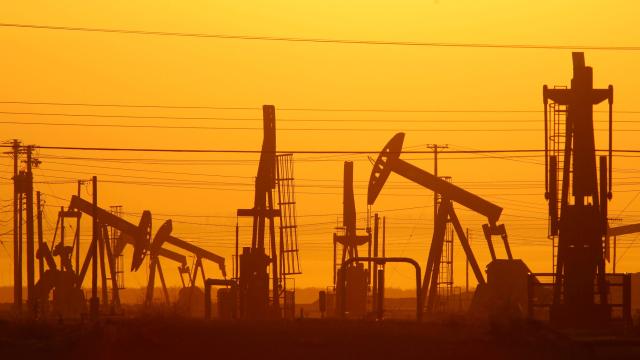Though the U.S. has made strides to lower air pollution nationwide, these benefits haven’t been shared equally. New research has found that the most-polluted places nearly 35 years ago remain the most polluted today. If a location’s Hispanic population increased in that time, it was more likely to see air quality inch toward the more-polluted end of the spectrum.
This is America, folks.
The new study, published in Science on Thursday, takes a historical look at fine particulate matter levels across the U.S. While the country managed to lower overall levels by about 70% between 1981 and 2016, the same places in the U.S. that were suffering then continue to suffer now. The authors broke down data from some 65,000 census tracts to learn socioeconomic information about them. They also pulled particulate matter data from more than 8.6 million distinct locations across the U.S. However, to measure how air pollution levels changed each year, the team ranked every neighbourhood from most polluted to least polluted. This offered some insight into the trends hiding within the data.
“We try to go into all research with limited assumptions about the potential outcomes,” authors Jonathan Colmer and Jay Shimshack, both economics professors at the University of Virginia, wrote in an email to Gizmodo. “Disparities could have fallen or increased or persisted. That being said, the degree of persistence that we find is very stark.”
Though the gap closed between the most and least polluted places over the 35-year period, certain areas are still persistently breathing dirtier air than the rest of the country. Places that were whiter and higher income in 1981 are associated with a lower ranking of air pollution then and today. The same is true for areas that became whiter and richer over the period of study. On the other end of the spectrum, though, areas that became poorer and more Hispanic are associated with more air pollution.
California’s Central and Imperial Valleys became more polluted, relatively. This region has also seen a spike in manufacturing, in part, due to Amazon warehouses. It’s also dotted by oil and gas infrastructure. Meanwhile, Coal Country states such as Kentucky and West Virginia have seen their air quality improve. With the death of the coal industry, that doesn’t feel like a coincidence to me. The paper doesn’t look at other air pollutants, which would likely give us a similar tale.
“In order to actually solve these issues, we first have to look at it to figure out how to mitigate the disparities,” Jonathan Buonocore, a research scientist with Harvard University’s T.H. Chan School of Public Health who was not involved in this study, told Gizmodo. “Part of the advantage of the historical lens is you can see basically what’s changed over time. You can get at why.”
The authors didn’t answer that “why” question in their analysis, but they’ve left the door open for others to. Joshua Apte, an assistant professor of civil and environmental engineering at the University of California, Berkeley suggests these differences could be due to the historical infrastructure and geography of a place. After all, transitioning dirty industrial activities and geographic quirks are not things that change overnight (if at all). We have long known these disparities exist, though. That’s what’s concerning. Still, governmental leaders have done little to enforce regulations that could reduce them.
People of colour are much more likely to die from the virus.
“At this point, we really have a lot of evidence that there are persistent disparities in air pollution exposure,” Christopher Tessum, an assistant professor of civil and environmental engineering at the University of Illinois Urbana-Champaign who wasn’t involved in the paper, told Gizmodo in an email. “So whatever is preventing the problem from being solved, it isn’t lack of evidence that the problem exists.”
